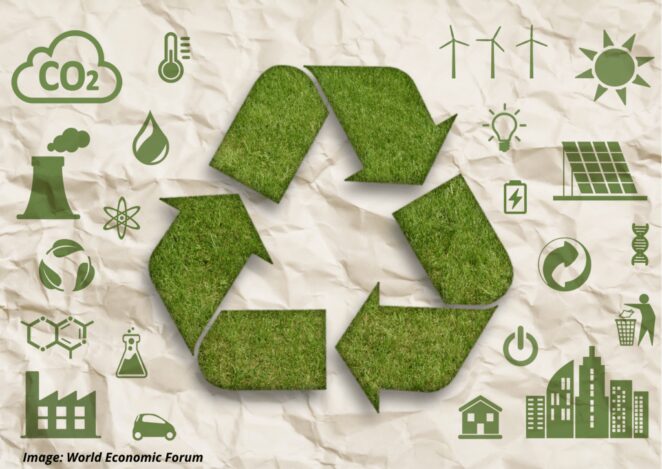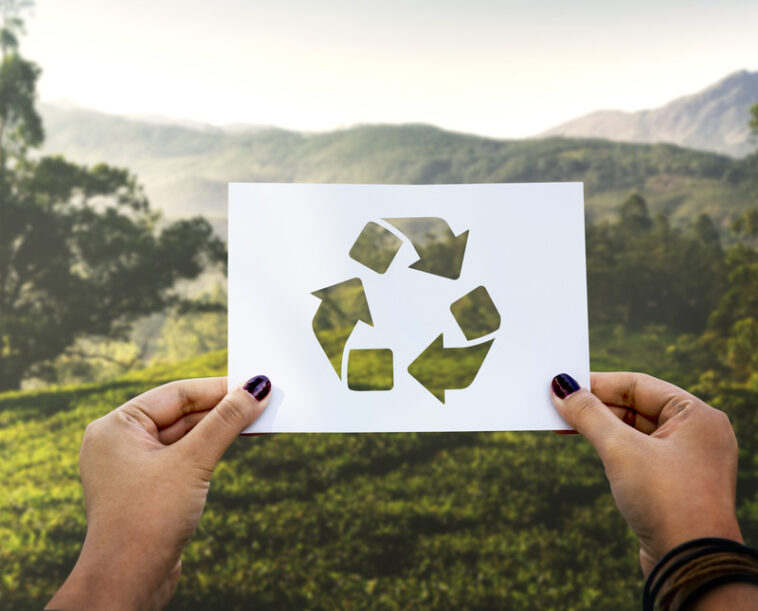Industries, as well as governments, have set ambitious targets for the years to come, hoping to achieve supply-chain resilience, cut greenhouse gas emissions as close to zero as possible, and meet rapidly changing consumer expectations. Needless to say, achieving such commitments requires thinking and acting beyond the existing limits. The global economy is now roughly 7.2%, which translates into the fact that the world relies solely on virgin materials. The situation is getting worse year after year, placing more pressure on the environment than we’re seeing today, so keeping resources in the loop for longer is necessary.
Being a first mover in the process will undoubtedly bring about added benefits. For the sake of clarification, the circular economy is a model of production and consumption based on the reuse and regeneration of materials (or products). It’s good for business, people, and, above all, the environment. To put it simply, the circular economy is the exact opposite of the linear economy in which we take and then waste. Looking at today’s consumption levels, sustaining the current growth trajectory is impossible without leveraging the planet’s ecological resources, but we have a solution within our reach.
Before you begin, it’s worth considering these tips on what you can do with your business.
1. Keep Components and Materials Circulating in The Economy

Invest, design, purchase, deliver, and monitor products to be returned efficiently, ensuring maximum potential beyond just using them in their first lifecycle. The aim is to keep components and materials in the economy for as long as possible. Product returns shouldn’t be viewed as a headache or cost drains, as they can offer a competitive advantage. In other words, returns are the new growth strategy, so you can enhance customer experience, optimize costs, and preserve revenue. Design products for greater longevity by rethinking your business model and shifting to a long-term view; start to make incremental changes to move in the right direction.
Now, a few words about packaging. In the circular economy, all wastefulness is eliminated from the supply chain, which means that no raw materials are lost. Resources should be kept in closed loops to generate zero waste. Because of the nature of packaging materials and designated usage, the industry relies on a linear model, which represents a concern for the ecosystem. It’s possible to have a level of reuse within your business by designing packaging that lends itself more easily to reuse. Consumers can personalize their purchases, the production cost is divided over multiple uses, and you can gain insight into business operations (by using smart systems).
2. Decrease Your Reliance on Fossil Fuels
Business processes rely on fossil fuels to a great extent, from the gasoline used to power corporate fleets to the natural gas heating offices. Although the fossil fuel industry has lost ground, corporations aren’t doing all they can to embrace renewables, which indicates continued interest in oil, coal, and natural gas. Fossil fuels cause pollution, so their ongoing use causes harm to the climate of our planet. You can decrease your reliance on fossil fuels by switching to renewable energy sources (solar, wind, geothermal energy) and investing in industrial electrification, driven by technologies that have become more affordable and more competitive. Don’t waste any more time (or energy) on fossil fuels.
3. Design Waste Out of The System

Large companies are primarily responsible for the rapid rate of plastic consumption and waste generation. Single-use plastics are the epitome of the crisis, contributing to the “plastification” of the oceans, which is irreversible, and the warming of the planet. One solution to this problem is recycling, that is, reprocessing plastic into new products to conserve resources and protect the environment. Even if the plastic problem isn’t your fault, you can be part of the solution. Plastic bottles and cups, empty cleaning products, plastic containers, and sauce bottles can be recycled, so encourage buyers to return them. According to the experts at Mil-tek, waste balers and compactors can be an asset to any business owing to the many benefits associated with their use, such as reduced waste disposal costs.
There’s no denying that recycling is an important component, but to create a circular economy for plastics, it’s necessary to ensure that products are designed, from the very get-go, to be reused. Consider making the transition to sustainable alternatives to single-use plastic, such as:
- Glass
- Platinum silicone
- Wood
- Natural fiber cloth
- Cardboard
If you’re worried that plastic might end up in the environment, you’ll be happy to know there are solutions. What doesn’t get properly managed ends up in the ecosystem.
4. Educate And Activate Your Organization
Be certain everyone in the company understands your new goals and ambitions to generate enthusiasm for the proposed outcomes. Regardless of the industry you activate in, foster a shared vision among staff workers at every level of the organization to make sure they understand their own roles. Consider arranging training sessions so that everyone understands what the circular economy is and what it implies. Undoubtedly, they’ll feel proud of your commitment to sustainability. Since social media is such an effective tool, share explanatory videos with company members through sites like YouTube. Online presentations can be developed on SlideShare or Prezi.
5. Be Technology Agnostic

Last but certainly not least, it’s a good idea to be technology agnostic because there’s no one true tech. More often than not, it’s the right thing to do. Be open to new ideas and use different technology tools to solve your problems rather than using whatever tool your organization decided to buy and implement. For example, chemical recycling isn’t at the level where it could or should be. At least temporarily, separate business processes from technology if you want to enjoy perks such as identifying inefficiencies, diving deeper into reasoning, and discovering a one-of-a-kind opportunity. Being technology agnostic will only make you more adaptive.
To sum up, you must reposition your company toward the circular economy, as consumers, workers, and investors are aware that addressing climate change is of the essence. No matter where your organization sits, a circular economy provides cross-industry partnerships, so be willing to increase the lifespan of raw materials.




